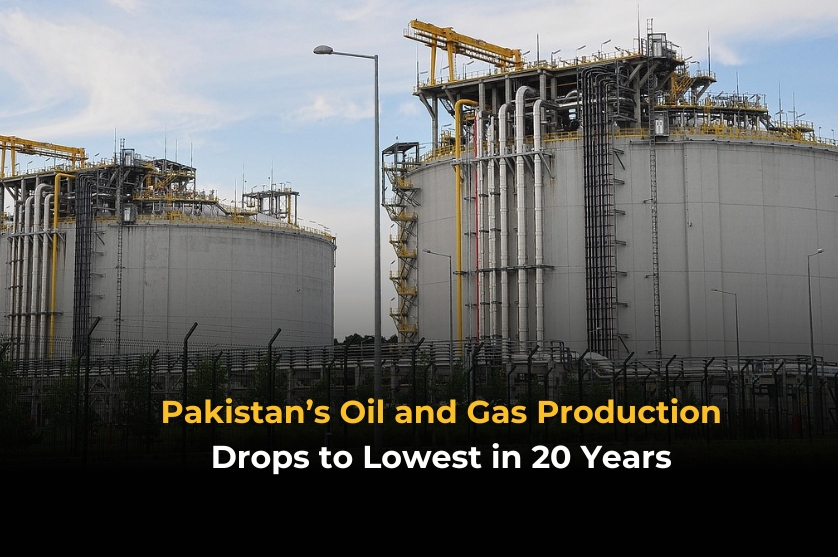Picture this: factories in Karachi, Lahore, and Faisalabad slowing down, their chimneys releasing less smoke, and turbines humming faintly instead of roaring. Behind this quiet lies a serious crisis — Pakistan’s oil and gas production has hit its lowest level in two decades. The reason? An oversupply of RLNG imports, shifting industrial policies, and rising costs that are shaking the foundations of the country’s energy security.
Pakistan’s Oil and Gas Production Reaches All-Time Low in FY25
During the fiscal year 2025 (FY25), Pakistan produced an average of 62,400 barrels per day (bpd) of oil, which was a 12% year-on-year (YoY) drop. The fourth quarter was worse still, with an 8% quarter-on-quarter (QoQ) decline and a 15% YoY drop. Natural gas production was also affected, falling by 8% YoY to 2,886 mmcfd, with the fourth quarter registering a 7% QoQ and 10% YoY decrease. This is the lowest level of hydrocarbon production in 20 years, raising serious alarms for Pakistan’s energy industry.
The Primary Reasons behind the Decline
There were a number of reasons for this record drop:
- Oversupply of RLNG – Regasified liquefied natural gas imported from abroad replaced domestic production.
- Policy Change – Industries were shifted from the use of natural gas to the national electricity grid.
- Off-Grid Surcharge – An additional Rs 791/mmbtu price reduced gas prices to Rs 4,291/mmbtu, where gas-based power became costlier than grid electricity.
The consequence? Industrial usage of local gas plummeted, leading to a reduction in production by producers.
Field-by-Field Declines Illustrate the Extent
The Tal Block that produces roughly 17% of Pakistan’s oil production witnessed a 22% YoY fall in Q4. Within this, Maramzai and Mardankhel fields witnessed colossal falls of 54% and 52% respectively.
In the gas front, Qadirpur and Nashpa fields witnessed YoY falls of 36% and 34% during Q4. Even the Sui field, Pakistan’s biggest gas producer, witnessed steady output declines.
Economic Impact — Greater Pressure on Forex Reserves
This production crisis is more than an energy crisis — it’s a national economic threat. With reduced local production, Pakistan was forced to import expensive fuels. By estimates, the rise in fuel imports contributed more than $1.2 billion to the foreign exchange burden of the country in FY25.
This dependency not only increases the import bill but also subjects Pakistan to international fuel price uncertainty and supply risks.
The FY26 Outlook — Hope and Caution
Expectations for FY26 indicate oil production to stay at 58,000–60,000 bpd and gas production at 2,750–2,850 mmcfd. Unless there is new E&P investment or policy shifts, this would be the third year running of decline.
But there’s a potential turnaround in the works. The government is going to renegotiate its long-term RLNG purchase agreement with Qatar in March 2026. More accommodative terms are expected to leave room for indigenous players to ramp up production, subject to investments in field maintenance and capacity enhancement.
Why This Crisis Matters for Pakistan
- Energy Security – Sustained decline poses threat to industrial growth and stability.
- Economic Stability – Increased imports put pressure on foreign exchange reserves and raise exposure to international price fluctuations.
- Industrial Impact – Prime industries such as textiles, cement, and fertilizers are typically hit with increased costs and uncertain supply.
The FY25 slump in Pakistan’s petroleum production is an eye-opener. Trigged by RLNG surplus, policy blunders, and costly operations, the crisis carries economic and industrial implications that cannot be ignored. The coming year will put the challenge to Pakistan’s ability to balance imported LNG with increased domestic output — a balance that is pivotal to energy independence and long-run economic stability.





